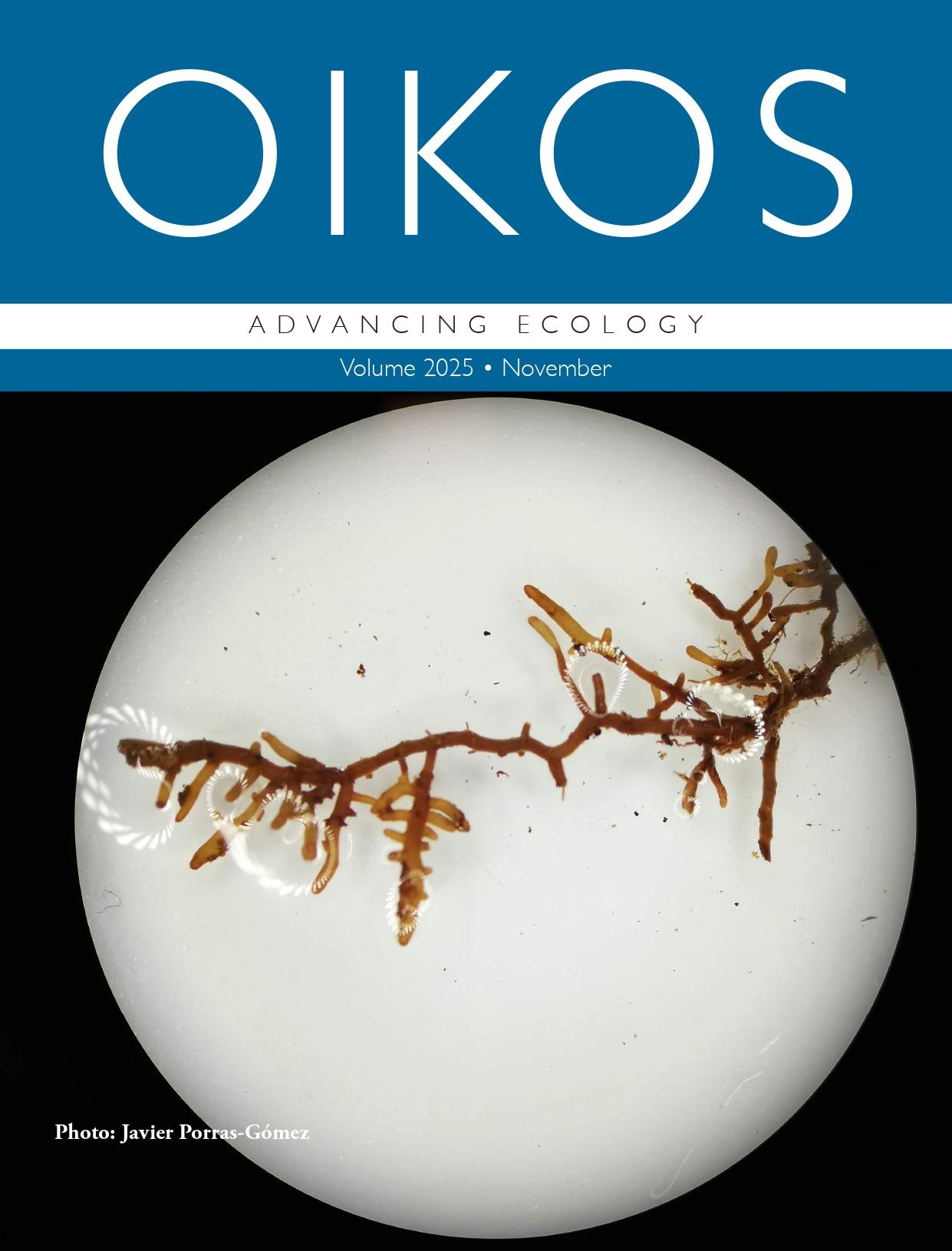Cover November 2025
Submitted by editor on 4 November 2025.
A study of European beech forests, by Rodríguez-Uña et al. (2025) reveals that trees can maintain water uptake during drought by drawing from deeper soil layers, but dry conditions reduce the diversity of their root-associated fungi—threatening vital ecosystem processes like nutrient cycling and forest productivity.
Abstract: Temperate forests on their warm and dry distribution limits are expected to be most vulnerable to reductions in water availability. This prediction is mostly based on studies assessing single forest functions, mainly growth. Water and nutrient cycling are functions that rely on tree roots and their symbiotic association with ectomycorrhizal (ECM) fungi. Trees can compensate for seasonal reductions in water availability by shifting root water-uptake (RWU) towards deeper soil layers, but ECM fungi mostly dwell in the topsoil, thus suffering from desiccation and compromising nutrient uptake. We hypothesised that drier sites should depict larger seasonal shifts in RWU, but at the expense of lower ECM fungal diversity and colonization of fine roots by ECM fungi. We selected three beech Fagus sylvatica forests in their warm distribution limit with contrasting geographic locations and mean annual precipitation: northern Atlantic (2500 mm), intermediate transitional (1150 mm) and southern Mediterranean (780 mm). We collected soil, stem and root samples in spring (wet) and summer (dry) to: 1) quantify fine-root density and colonization by ECM fungi, 2) infer RWU from isotopic composition of plant and soil water and 3) characterize ECM communities through DNA-metabarcoding. Generalized and linear mixed models revealed that high topsoil moisture benefited ECM diversity, but higher diversity and ECM colonization did not imply larger contributions of the topsoil to RWU. The prevailing climate and abiotic conditions determined how ECM communities were structured, more than seasonal climatic variability. Across sites, communities differed in their functional diversity: ECM fungi with long hyphae, more vulnerable to water scarcity, dominated at the southernmost site, where water availability was the highest. Our results suggest that, in a climate change scenario, increasing drought might not compromise RWU, but it would still be detrimental for ECM communities, compromising key ecosystem services such as nutrient cycling and productivity.